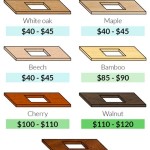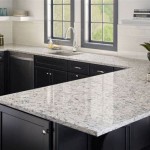Countertop Ice Makers That Recycle Water: A Sustainable Solution
Countertop ice makers have become increasingly popular due to their convenience and ability to produce ice quickly without requiring a direct water line connection. While traditional models consume water during the ice-making process, a newer generation of countertop ice makers incorporates water recycling technology. These models offer a more sustainable approach to ice production, minimizing water waste and promoting environmental consciousness. This article explores the functionality, benefits, and considerations associated with countertop ice makers that recycle water.
The fundamental principle behind these devices lies in their closed-loop water system. Unlike conventional ice makers that drain unused water after each ice-making cycle, water-recycling models collect this water and recirculate it for subsequent batches. This significantly reduces the amount of fresh water required, making them a more efficient and eco-friendly option.
How Water Recycling Works in Countertop Ice Makers
The operation of a countertop ice maker with water recycling capabilities involves several key stages:
Water Reservoir: The process begins with a water reservoir that is filled manually. The capacity of this reservoir varies depending on the model, typically ranging from one to several liters. This reservoir serves as the primary water source for the ice-making process.
Ice-Making Cycle: When the ice maker is activated, water is pumped from the reservoir to the ice-making tray or molds. The evaporator, a component that cools the water rapidly, causes the water to freeze, forming ice cubes. The duration of the ice-making cycle depends on the model and the desired ice cube size.
Water Recovery: After the ice cubes are formed and released into the ice storage bin, any remaining water in the ice-making tray is not discarded. Instead, it is drained back into a separate collection chamber within the appliance. This is a critical step in the water recycling process.
Filtration and Purification: The recovered water often passes through a filtration system before being returned to the main water reservoir. This filtration system removes impurities, mineral deposits, and any residual particles that might affect the quality of the ice or the performance of the ice maker. Some models incorporate more sophisticated purification technologies, such as UV sterilization, to further enhance water quality.
Recirculation: The filtered and purified water is then pumped back into the main water reservoir, ready for the next ice-making cycle. This closed-loop system minimizes water waste by continuously reusing the same water supply. The system will continue this cycle until the ice basket is full or until the water level in the reservoir reaches a minimum threshold.
Throughout this cyclical process, the ice maker monitors water levels and ice production. Low water levels in the reservoir will trigger a notification, prompting the user to refill the reservoir. A full ice storage bin will also halt the ice-making process to prevent overflow.
Advantages of Water-Recycling Ice Makers
Countertop ice makers that recycle water offer several benefits compared to traditional models, making them an increasingly attractive option for environmentally conscious consumers.
Water Conservation: The primary advantage is the significant reduction in water consumption. By recycling water, these ice makers use substantially less fresh water compared to models that drain unused water. This can lead to lower water bills and a reduced environmental impact, especially in areas with water scarcity concerns.
Cost Savings: Reduced water consumption translates directly into lower water bills. Over the lifespan of the appliance, the savings can be considerable, offsetting the initial cost of the ice maker.
Convenience: While all countertop ice makers offer convenience, water-recycling models can reduce the frequency of needing to refill the reservoir. Because water is continuously being recycled, the reservoir may not need to be refilled as often as a conventional model.
Improved Ice Quality: The filtration and purification systems that are often integrated into water-recycling ice makers can lead to improved ice quality. By removing impurities and mineral deposits, the resulting ice cubes are clearer, purer, and may have a better taste.
Environmental Responsibility: Choosing a water-recycling ice maker demonstrates a commitment to environmental responsibility. By minimizing water waste, consumers can contribute to the conservation of precious water resources and reduce their overall environmental footprint.
Factors to Consider When Choosing a Water-Recycling Ice Maker
When selecting a countertop ice maker that recycles water, several factors should be considered to ensure that the chosen model meets specific needs and preferences.
Ice Production Capacity: Consider the amount of ice required on a daily or weekly basis. Ice makers vary in their ice production capacity, so choose a model that can produce sufficient ice to meet the demand. This is usually measured in pounds of ice produced per day.
Ice Cube Size and Shape: Different models produce ice cubes in various sizes and shapes, such as bullet-shaped, nugget ice, or traditional cubes. Select a model that produces ice in the desired size and shape.
Reservoir Capacity: The capacity of the water reservoir affects how often it needs to be refilled. A larger reservoir will require less frequent refills but may also increase the overall size of the appliance.
Filtration System: Evaluate the type of filtration system included in the ice maker. Models with advanced filtration systems, such as those incorporating UV sterilization, offer superior water purification and ice quality.
Noise Level: Ice makers can generate noise during operation. Check the noise level rating of the model to ensure that it is acceptable for the intended environment.
Energy Efficiency: Look for an ice maker with a good energy efficiency rating to minimize energy consumption and lower electricity bills. Even though the primary focus is water conservation, energy efficiency is also an important aspect of sustainability.
Maintenance Requirements: Consider the maintenance requirements of the ice maker, such as the frequency of cleaning and filter replacement. Select a model that is easy to maintain and that has readily available replacement parts.
Size and Dimensions: Ensure that the ice maker will fit comfortably on the countertop and that it is easy to access for filling and emptying ice.
Price: Water-recycling ice makers may be more expensive than traditional models. Weigh the initial cost against the long-term savings on water bills and the environmental benefits to determine the best value.
User Reviews and Ratings: Read user reviews and ratings to get insights into the performance, reliability, and customer satisfaction of different models.
In conclusion, countertop ice makers that recycle water offer a sustainable and efficient solution for ice production. By reducing water waste and improving ice quality, these appliances provide numerous benefits for consumers and the environment. When selecting a water-recycling ice maker, consider the factors outlined above to choose a model that meets specific needs and preferences.

Vivohome Electric 2 In 1 Countertop Ice Maker And Water Dispenser Machine 48lbs Day

Vevor Countertop Ice Maker 37lbs In 24hrs Auto Self Cleaning Portable With Scoop Basket And Drainpipe 2 Ways Water Refill Stainless

Vivohome Electric 2 In 1 Countertop Ice Maker And Water Dispenser Machine 48lbs Day

Vevor Countertop Ice Maker 37lbs In 24hrs Auto Self Cleaning Portable With Scoop Basket And Drainpipe 2 Ways Water Refill Stainless

The 4 Best Countertop Ice Makers Of 2025 Reviews By Wirecutter

The 8 Best Countertop Ice Makers Of 2025 Portable Machines

Vivohome Electric 2 In 1 Countertop Ice Maker And Water Dispenser Machine 48lbs Day

Culligan Quench S 3 In 1 Ice Machine

Whynter Idc 221sc Countertop Direct Connection Ice Maker And Water Dispenser Silver

Evozy Nugget Ice Maker Countertop Ecozy S Pellet Machine With App Control 44lbs Day Self Cleaning Makers
See Also








